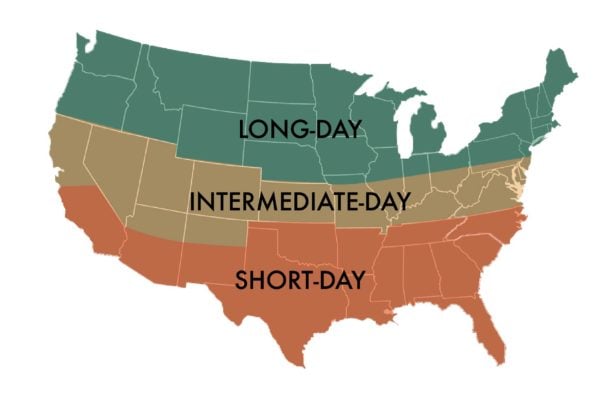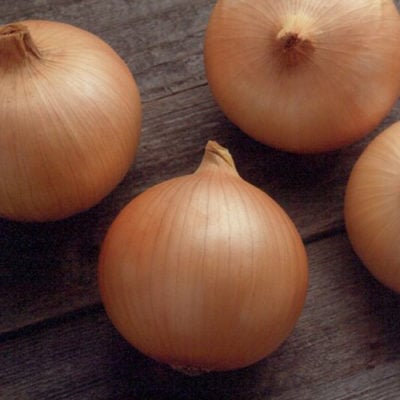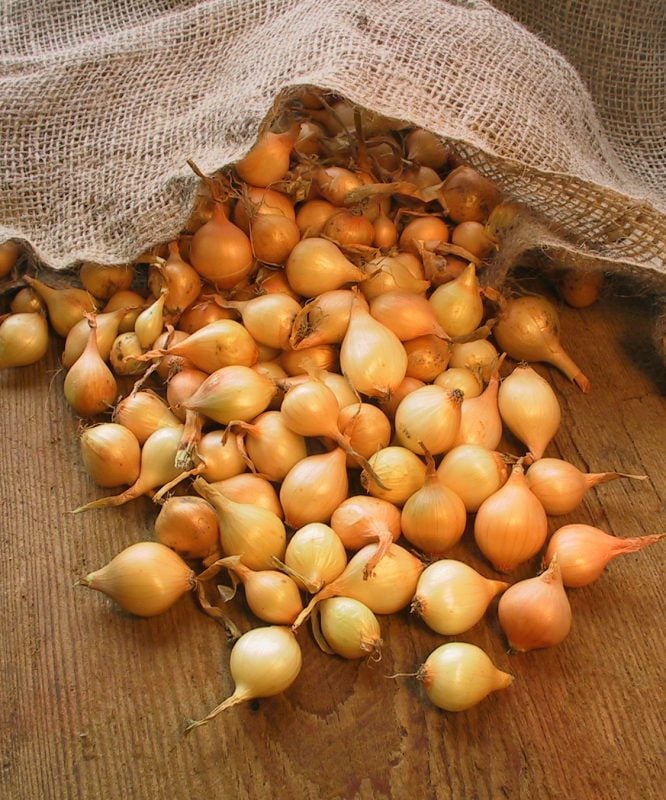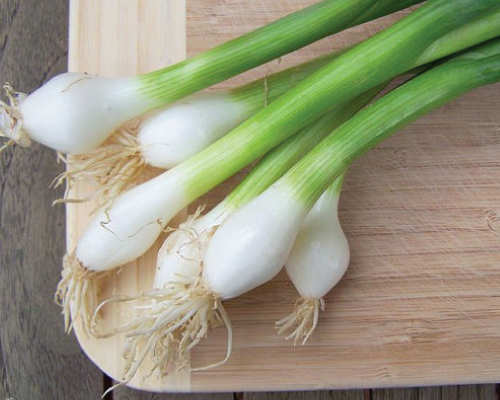
Learning Download: How to Grow Onions
From Seed to Harvest: A guide to growing onions.
A way to jazz up any dish is to add some onions to it. Onions can be grown from seed or from sets, which are immature onion bulbs. There are more opportunities for gardeners if onions are grown from seed, and the outcome is rewarding. There are different kinds of onions, such as short-day onions which grow best in the south and long-day onions which grow best in northern climates. Pick the correct variety for your garden.
To plant:
Onions need a long growing season, so begin them indoors as early as two months before the last frost. Plant seeds 1/4 inch deep in flats filled with potting mix. Add a plastic top to retain moisture until the onion sprouts.
To grow:
Once sprouted, remove the plastic. Prior to transplanting, amend the soil with compost. When the transplants are about the size of a pencil, move them to the garden. Plant transplants 4 inches apart. Onions do best in a soil with a pH of 6.0 to 6.5 and in full sun. Water the onions frequently as they have shallow roots and require consistent moisture.
To harvest:
Onions are ready to harvest when the green tops flop over, but they can also be harvested quite early as green onions. For the full onion, once the tops flop over, wait for a dry day to complete the harvest. Pull the bulbs and then place them in a warm, dry location out of direct sun and away from the soil to cure, which can take up to three weeks. Once they have cured, cut back the foliage and store in a cool, dry location.
What onions crave:
Upon planting, add compost to the soil, but since onions are heavy feeders they will grow best if fertilized throughout their growth. Also, add a timed-release granular 10-10-10 or 12-12-12 fertilizer to spread in the soil. Using a nitrate-based fertilizer will make the onions sweeter at harvest.
Where to buy onion seeds:
You can find many different kinds of onion seeds, including red, white, yellow and sweet onions at Urban Farmer.
Learning Download: How to Grow Onion Sets
From Seed to Harvest: A guide to growing onion sets.
Onions are grown from onion sets, which can be grown from seed, but it is oftentimes easier to grow the onions from the sets themselves. Onion sets are small, dry onion bulbs that were grown in the previous season and not allowed to mature. When they are planted the following season, they produce an early onion crop in regions with long-growing seasons, so they are highly convenient for gardeners. Since onion seed germination rates are bad, gardeners often opt for growing onions from sets.
To plant:
Plant onion seeds when the soil temperatures are at least 45 degrees. To grow your own onion sets, sow the seeds thickly, and to do so, broadcast them evenly over the bed. If you choose to plant seeds individually, space them 1/2 inch apart and 1/4 inch deep.
To grow:
When choosing to grow onion sets, they do best in full sun, in a bed free of debris and full of compost-rich soil. Unlike many vegetables, once the seeds germinate, don’t thin the seedlings. Let them grow in. The bulb formation depends on the length of day there is, so be sure to select a variety that is correct for the region you will be growing in. Don’t let the bed go dry between waterings, be sure to keep it evenly moist. Let the bulbs grow until about July, when the tops start to dry. This means the bulbs should be about 1/2 to 3/4 inch in diameter.
To harvest:
Harvest the bulbs. Don’t save the sets larger than 1 inch in diameter or smaller than 1/2 inch in diameter. Cure the sets in a sunny area for 10 days or so, until the tops have dried. Then, remove the tops and store them in mesh bags in a cool, dry place until its time to plant the sets the following spring. Be sure to label the bags so you don’t forget which set is which.
Planting the sets:
When it comes times to plant the sets the following spring, space the sets 1 to 1 1/2 inches deep and 2 to 3 inches apart to allow space for the bulb to grow. However, if you are using the sets to grow green onions, you can plant them closer together.
What onion sets crave:
When growing onion sets, you should refrain from using any type of fertilization, as fertilizer can cause green top growth, which will take energy away from the bulb formation.
Where to buy onion sets:
You can find onion sets at Urban Farmer.
Learning Download: Common pests and diseases: Onions
Common pests and diseases: Onions
When growing vegetables, it is always exciting to care for the plant throughout its growing phase and then harvest it for delicious recipes later on, but one thing to watch out for is pests and diseases. Different plants are susceptible to different types of pests and diseases, and it is important to make yourself aware so you can keep a watchful eye and also take any preventative methods to keep your plants safe throughout their lifespan.
Onions can fall victim to several different pests and diseases.
Pests:
Some of the pests affecting onions include leafminers, thrips and onion maggots.
Leafminers can create white splotches on the leaves and the leaves will fall off the plant. If the leafminers infect the plant when it is young, it can reduce the plant’s yield. Remove plant debris form the soil immediately after harvest to prevent this, and use insecticides once the damage is identified.
Thrips will create discolored leaves and scarring, and affected plants may look silver in color. To prevent this, don’t plant leeks or onion-related plants near grain fields. Over head watering may help reduce the thrips. Apply insecticides once you identify the damage as that of a thrip.
Onion maggots will cause seedlings to be stunted or wilt. If the infestation occurs while the onions are in their bulbing phase, the bulbs will appear deformed and be susceptible to storage rot after harvest. The onion maggot is a gray-colored fly that lays eggs around the base of the plant. The larvae, which comes from the eggs, will bore into the onions. To prevent onion maggots, clean up all debris after harvest, and apply granular insecticides if necessary. Remove any wild onion or chives, because these can act as an infection source. Utilize floating row covers.
Diseases:
Some of the diseases affecting onions include Botrytis leaf blight, damping-off, black mold and more.
Botrytis leaf blight is a fungus that will create small, white lesions with green halos. Leaves may be blight if moisture is prevalent for a long time. The disease prefers high humidity and warm temperatures, and the fungus survives on crop debris or in the soil. Older leaves are more susceptible to blight. To prevent this disease, plant the onions with enough space in between them to allow for good air circulation. Apply fungicides when needed.
Damping-off will cause the seeds to rot, and there will be discolored root tips. The disease prefers moist or wet soil, and the best way to prevent this disease from occurring is to plant only disease-free seed and tread the seed with fungicides. You can also practice crop rotation.
Black mold will cause dark discoloration near the neck of the plant and black streaks under the outer dry scales. To prevent this from happening, apply proper fungicides to the seeds prior to planting and store the onions in temperatures below 59 degrees. If you come in contact with black mold, make sure you wash your hands thoroughly.
Learning Download: Onion Comparison Chart
Onion Comparison Chart
| Day Length | Color | Variety | Days | Available in Organic | Disease Resistance |
| Short | Red | Red Creole** | 110 | Yes | |
| Short | Red | Red Grano** | 112 | Yes | |
| Short | Yellow | Texas Early Grano 502 PRR | 110 | Yes | |
| Short | Yellow | Texas Early Grano** | 110 | Yes | Yes |
| Short | White | Snowball White | 80 | ||
| Intermediate | Yellow | Candy | 110 | Yes | |
| Intermediate | Yellow | Cipollini Yellow** | 120 | ||
| Long | Red | Red Karmen | 80 | ||
| Long | Red | Ruby** | 100 | ||
| Long | Yellow | Stuttgarter Yellow | 80 | ||
| Long | Yellow | Sweet Oversize | 80 | ||
| Long | Yellow | Yellow Sweet Spanish** | 115-130 | ||
| Long | White | Ailsa Craig Exhibition** | 110 | Yes | |
| Long | White | Walla Walla Sweet** | 115 | ||
| Long | White | White Sweet Spanish** | 115 |
*All American Selection Winner
**Heirloom
***AAS Winner/Heirloom




